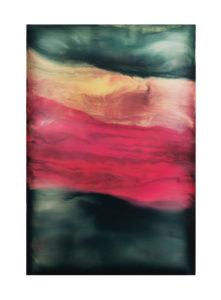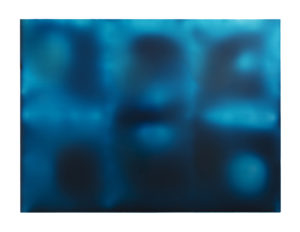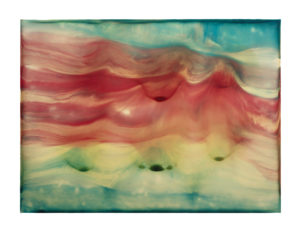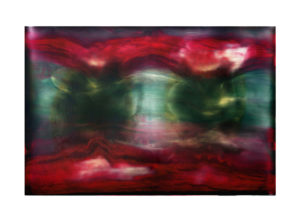Surface #5, 2019 - Colored varnish on mirror Perspex, aluminium frame - 100 x 150 cm
Surface #1, 2018 - Colored varnish on mirror Perspex, aluminium frame - 200 x 150 cm - Private collection
Surface #2, 2018 - Colored varnish on mirror Perspex, aluminium frame - 200 x 150 cm
Painting naturally has a certain liquid quality. However, there are enough painters who paint dry and where the paint is stuck immovably to the canvas. But there are also painters who drive that liquid aspect to the forefront and make it the core of their work. Take Jérôme Robbe.
He lets the paint flow freely and creates an image that contains an immense temporality. The paintings from the series ‘L’Air de Rien’ and ‘Surfaces’ are evocations of a fluid world. It seems as if the paint has solidified for a short moment before it continues to flow. A painting as a snapshot. Together these paintings form almost a stream of time. For Robbe, fluidity means freedom. Robbe doesn’t want to have control during the creative process. He wants to let nature take its course, leave things to drift and to be at the very most an assistant. Not one sketch precedes his paintings. It arises in the here and now by responding to what is happening, to the material.
A striking statement by Jérôme Robbe is: “Painting has nothing to do with genius, but everything with inventions. The genius lies in inventing materials and techniques that make it possible to paint differently and better."* The artist therefore regards this history of painting as a succession of technical inventions. First one painted with the hands, then on wood with water, subsequently with egg (tempera), after that oil, acrylic and many more were successively discovered, and panel was exchanged for canvas. In order to proceed the development of painting and to be a painter of your time, it is necessary to continue the sequence of inventions. The ‘L’Air de Rien’ series, started around 2009-2010, for example, is painted on plexiglass with a silver or gold coating, which has an effect on the depth, brightness and ‘temperature’ of the applied color. The series responds to the aesthetics of body work of cars, gems and jewelry, but also digital devices.
The artist heats the plexiglass sheet with a heat gun. As a result it becomes soft, expands, starts to bubble, is distorted and the surface turns into ripples, cracks and craquelures. The artist then has some liters of water vaporized above the plexiglass. The mist slowly whirls down on the panel. The transparent varnish colored with pigments, which is then poured over it, finds its way across the deformed surface, just as a river follows its bed or as a lava flow searches its lowest point. Gravity and chance do their job. Depending on the result, certain parts are sanded lighter (for example, where too much varnish accumulates) and once again poured with matte or glossy varnish. The artist consistently applies a lateral line in the support. It evokes associations with a horizon or a river through which the abstract monochromes can also be seen as landscape paintings. That landscape is reflected in the process: the pouring of the varnish on the irregular panel, the undulating landscape.
Where the artist previously depicted landscapes, he nowadays lets them emerge. The title ‘L’Air de Rien’ refers among other things to the artwork ‘Air de Paris’ by Marcel Duchamp (a small glass form in which air is stored).
Nanda Janssen for the Fluid Desires exhibition, Nest art center, The Hague, Netherland.




